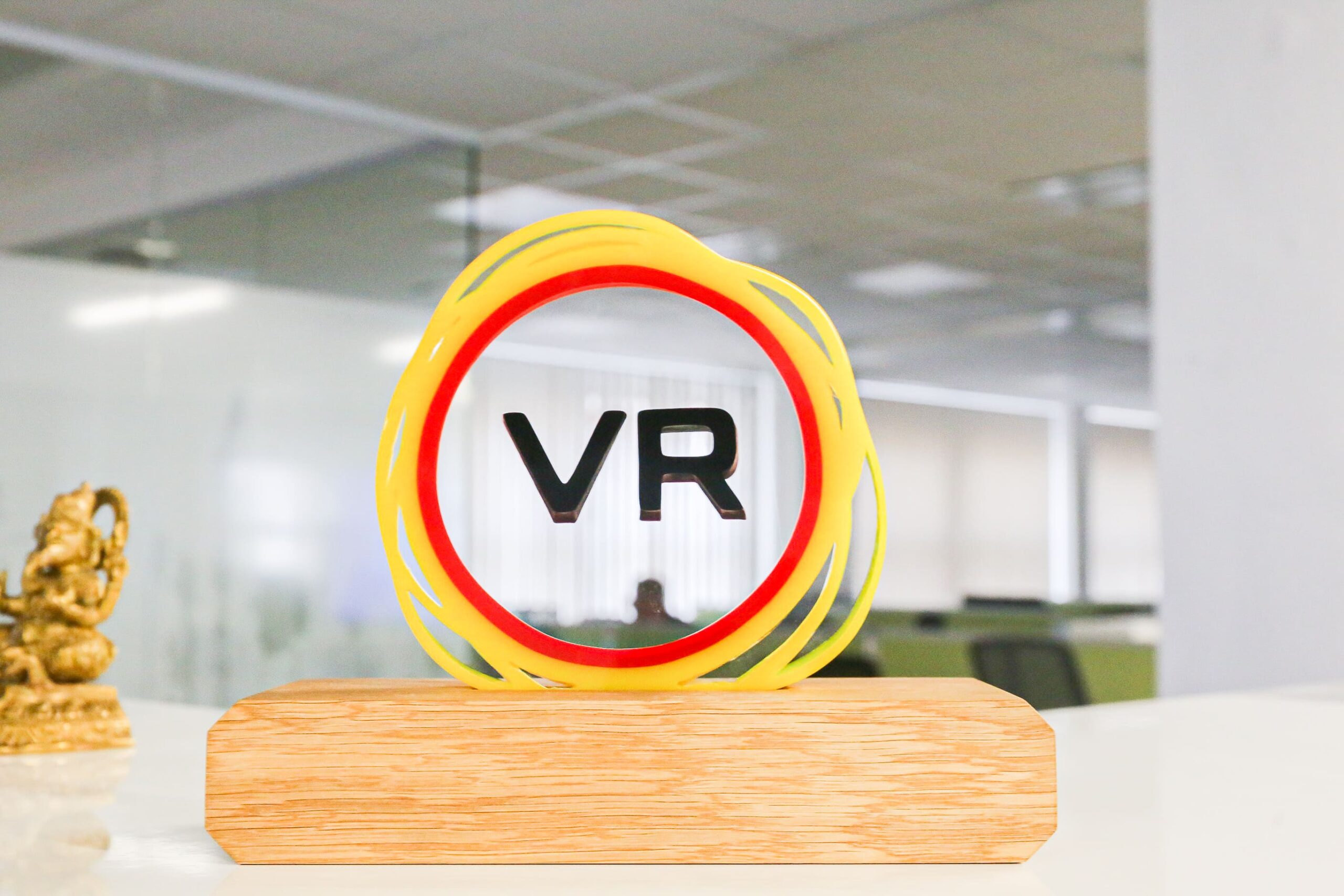In the last article, we focused on the metaverse upcoming next-generation infrastructure. We introduced the Victoria VR project, trying to build a new ecosystem, crossing the realm of virtual reality and blockchain as a leading company. In this article, we visited their office in Prague. Here comes to you an interview with them.
Victoria VR is based in Wenceslas Square located in the center of Prague, one of the most expensive and busiest spots in Prague. When We entered the office, we found a space that is so big that even 120 people can easily work there. Seeing us surprised by the size of the office, CEO Ondřej Dobruský told us: “We just moved to this base three months ago, I’m going to hire more people from now on, he space is over 1250 square meters.” Then he guided us to each section in the office.
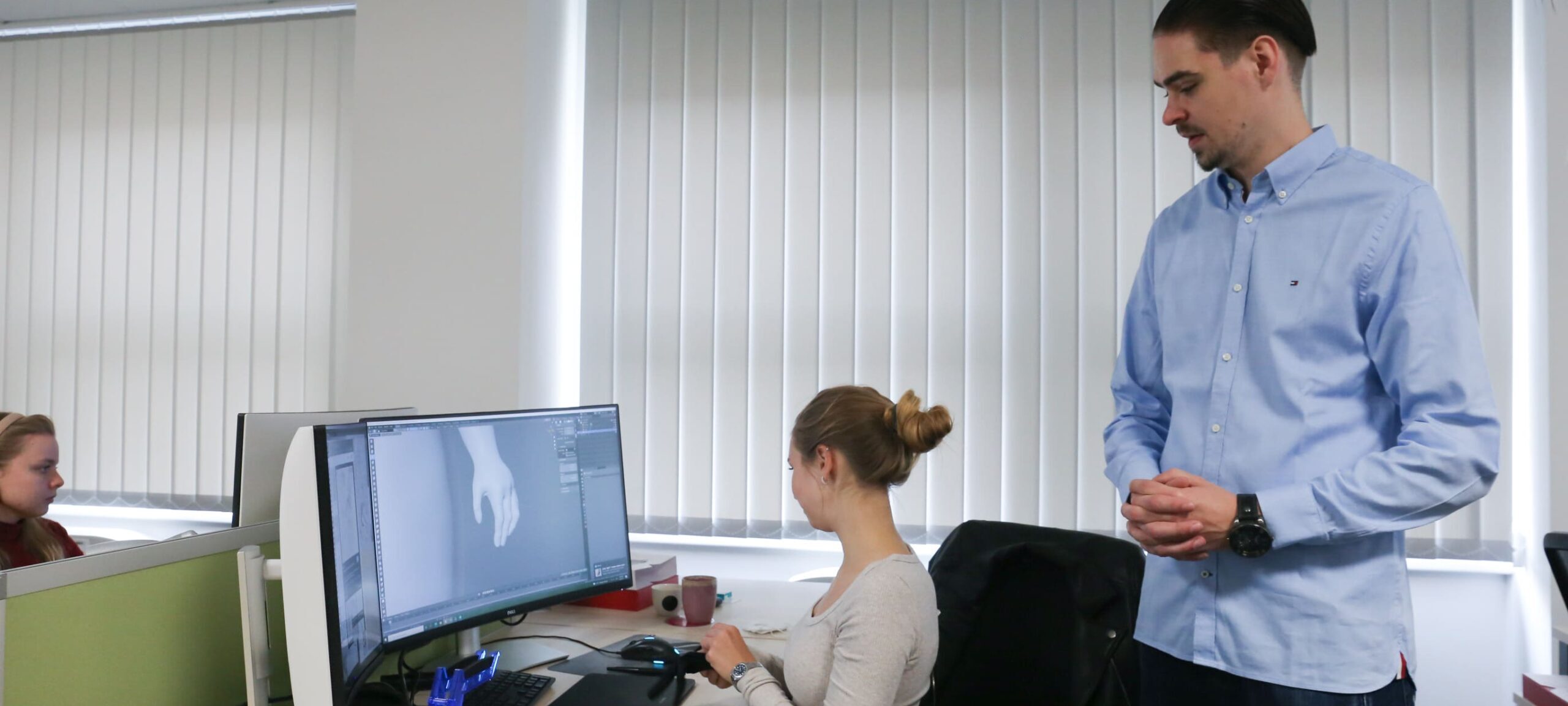
Architect team
First of all, he brought us to the section responsible for designing the architecture and landscape in VR. Architect, Grigorii Matiunin told us about the project.

They create drawings and 3D models from as if they were real designs an architecture. They have learned daily knowledge of the architectural field such as urban history, landscape design, and the environment of the real world, and applied it to the construction of the world of virtual reality. However, the world of virtual reality is still different from the real world, so they don’t have to worry about environmental issues and whether it functions in the same way as real cities and architecture.
Currently, the project they are challenging is to build an island environment that begins in the virtual reality world of Victoria VR. At the time of our visit, they were in the middle of working on the design of a 3km x 3km area called the “City Center”, which is the center of the island. “This is the hardest part to design,” said Grigorii Matiunin.
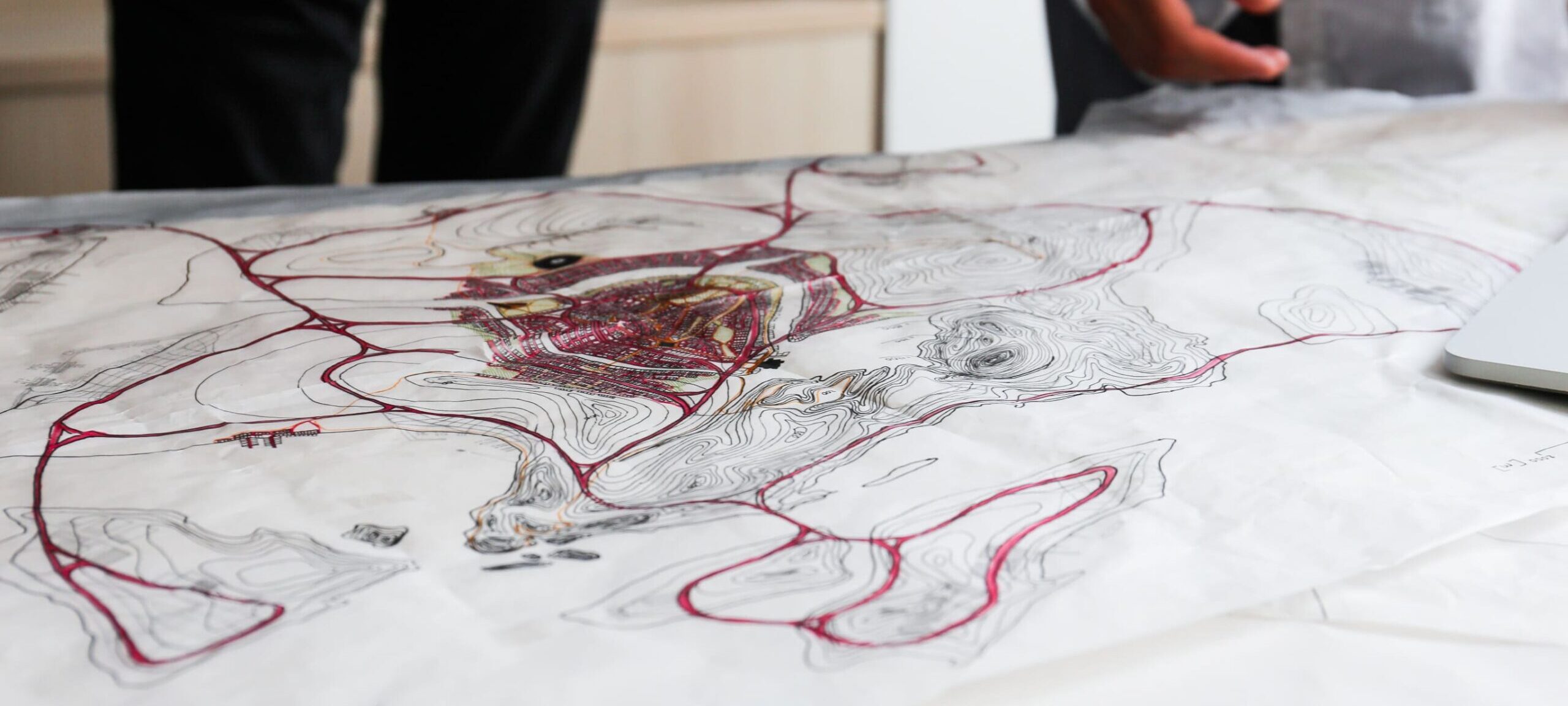
When I asked him if a user can design an architecture in VR, “There are two ways to design an architecture in VR. One is to design it yourself. Another one is that the architect team will design it, but we are discussing with the other five architects whether or not to design it on request,” he said.
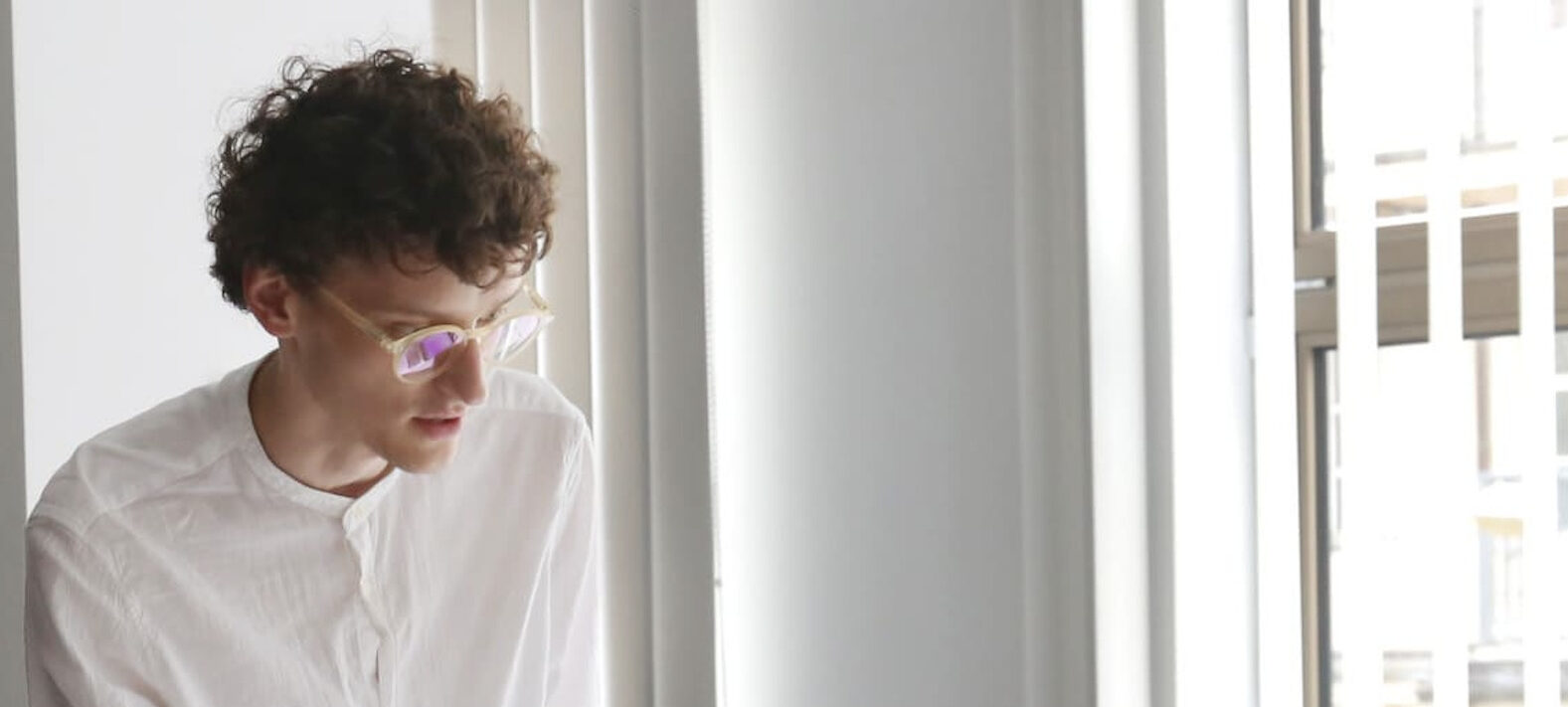
Nowadays, the view of traditional virtual reality architecture and urban design is changing.
For example, 3D model design using CG software and game development engine, architectural pre-view using VR headsets in the architectural field, and level design such as stage design in game development. Listening to the project in this department, we felt like being witnessed the cutting-edge case.
Development team
Next, we were invited to the section in charge of developing content such as games in VR. We entered and noticed illustrations of Japanese anime and games all over the wall. “Everyone who works in this section is a gamer and likes Japanese manga and anime,” said CEO Ondřej Dobruský.
Then, the meeting started on the whiteboard installed in the room. The content seemed to be related to the development of the game.

After watching the meeting, he spoke to the member and showed us a demonstration of the game they were developing. This demonstration is testing whether the concept of the system under development works. It also includes particles that are a game effect. Epic Games’ Unreal Engine is used as the engine for these game developments.
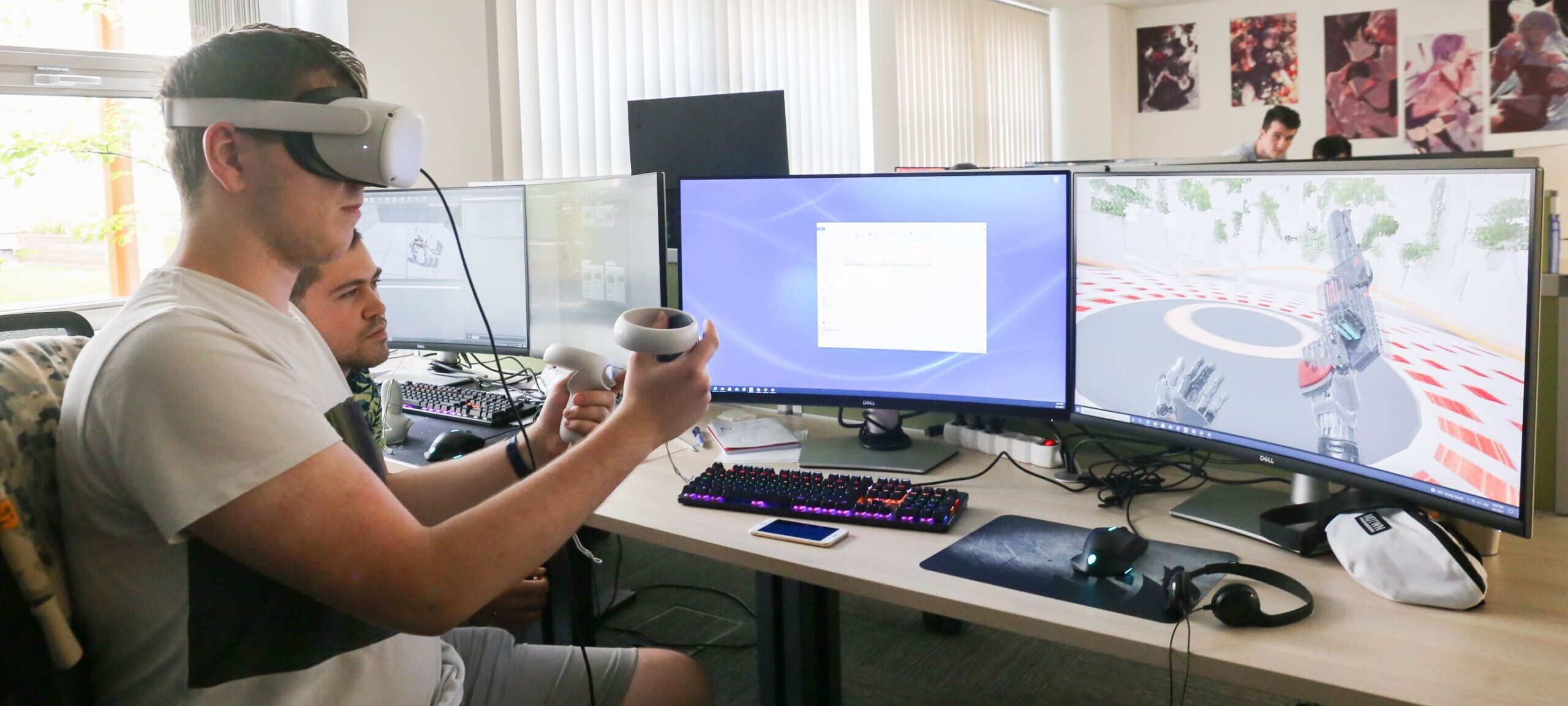
When we asked him if the game you are developing would be part of the metaverse, “We’re all working on the metaverse,” he said.
In this section, we felt that in the early stages of developing and releasing these new platforms, the enthusiasm of gamers, who love the platform and never stop is a very essential point. The fact that they create tools and socialize them leads to let ordinary users participate in the platform. It is an extension of the Internet context that allowed anyone to use and improve the source code published on open source platforms such as Github and WordPress. Pioneers created the soil for the platform, and then the platform evolves and forms a new community as various users use the platform.

Visual design team
The last section we visited was the section that mainly produces visuals in VR. This section is divided into 3DCG modeling of characters and the production of textures and is working on each production. Ondřej first introduced us to the person in charge of 3D modeling of characters etc. We asked her what she does and she says “I’m making a zombie.” The 3DCG software she uses is Houdini from Side Effects Software, which has also been introduced in the production of many Hollywood and Disney films.

Next, he introduced us to the person in charge of texture production. She kindly opened photoshop and displayed the texture of the floor. The texture was so elaborate that it looked the same both seen from near or far.
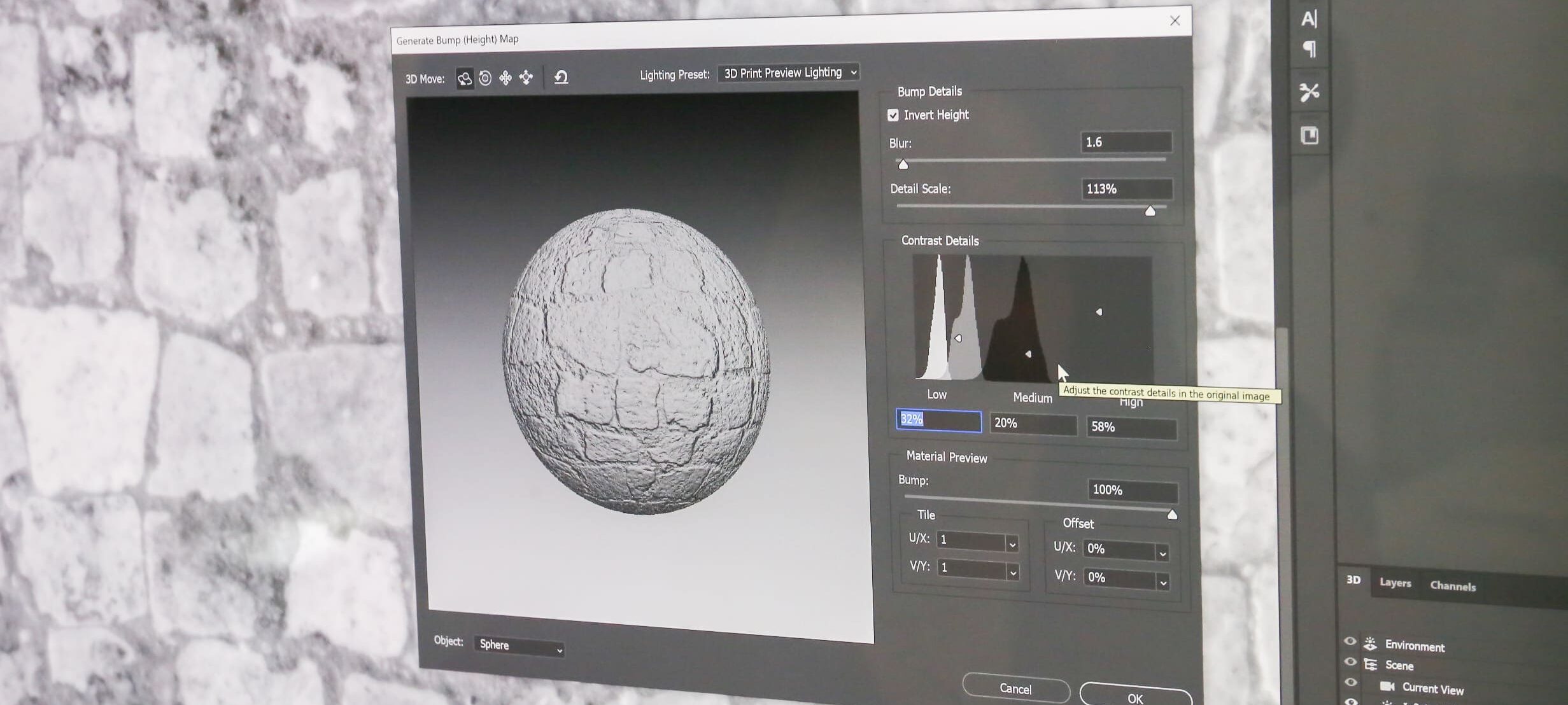
Playful office
After guiding us through the sections, they took us to the courtyard of the office. I felt that the courtyard is a place where the sunlight and wind are so pleasant that staff can relax and chat with their colleagues.

Next, they guided us to a room with a large number of machines lined up all over the wall. These machines can communicate with each other 20GB per 1second.

There are also spaces where staff can relax and talk about the project.
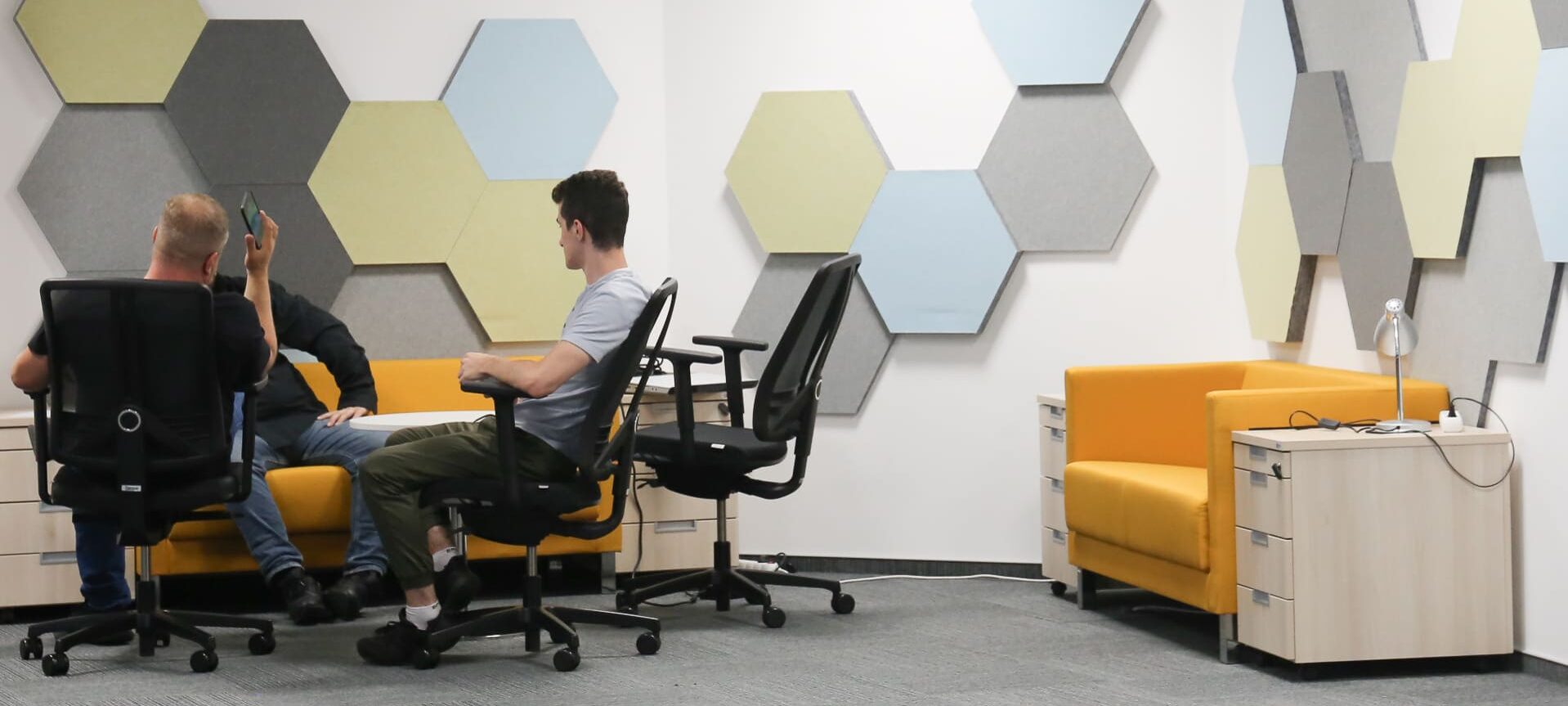
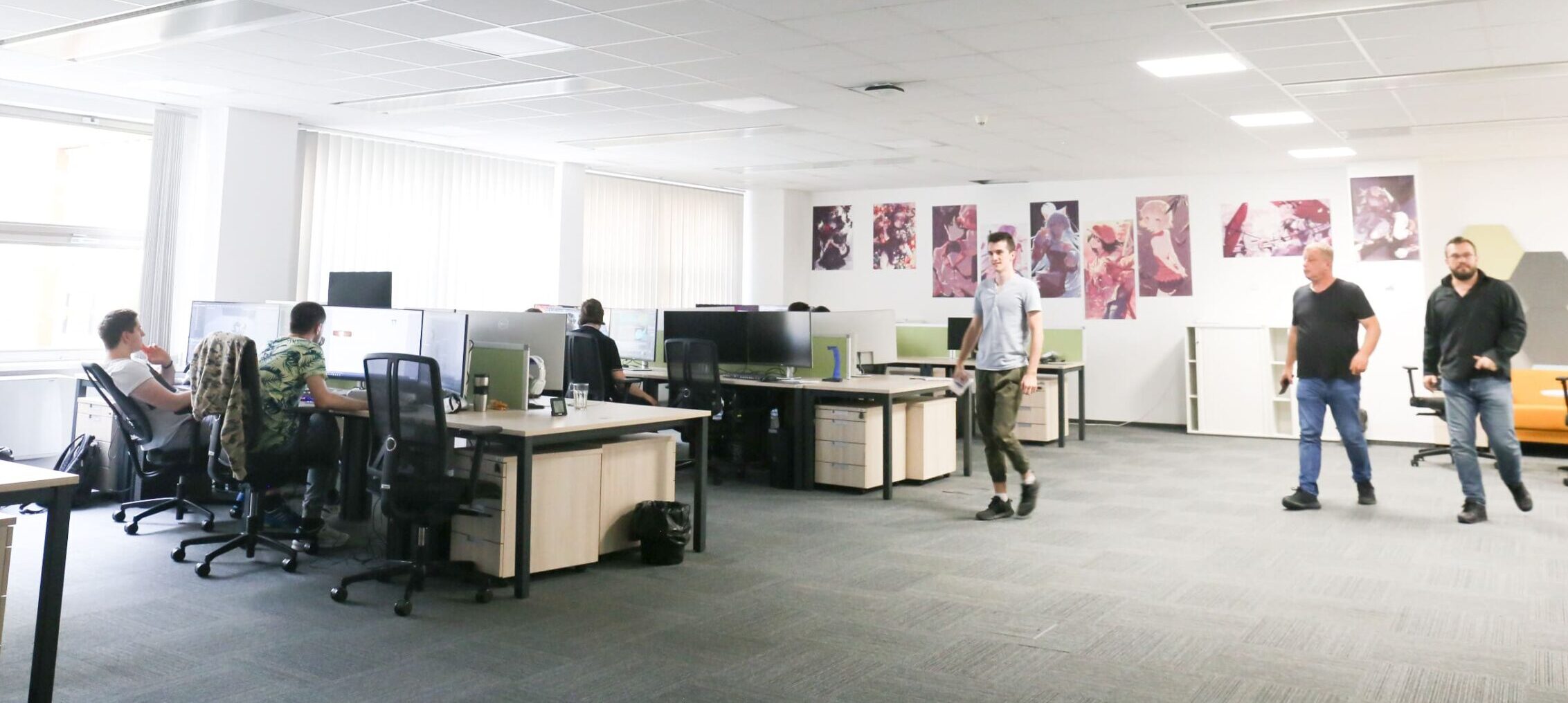
It was a great visit to Victoria VR’s office in Prague, Czech Republic, and is amazing to research how they work on the project.
In our next article, we will tell you about an interview CEO Ondřej and Co-founder Adam. Victoria VR’s vision and its founding story will give you key points for understanding virtual reality in the future.
■Victoria VR
・URL:https://victoriavr.com/
・Facebook:https://www.facebook.com/victoriavrcom
・Twitter:https://twitter.com/VictoriaVRcom
・linktree:https://linktr.ee/Victoria.VR

